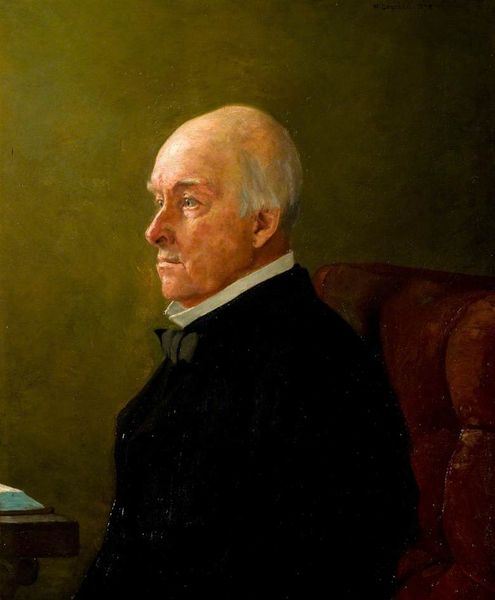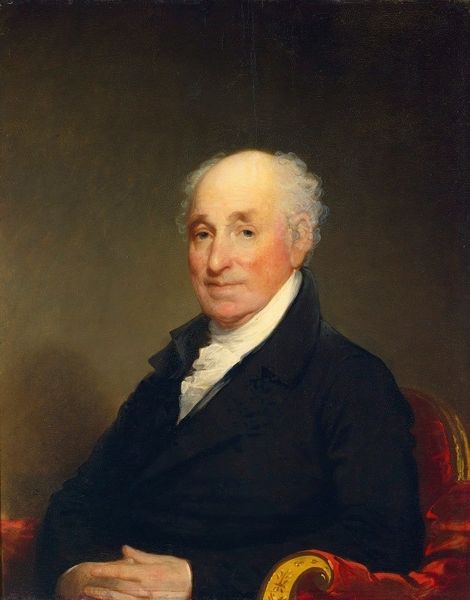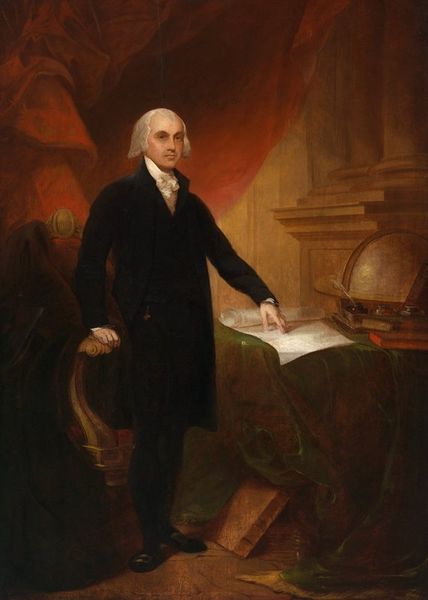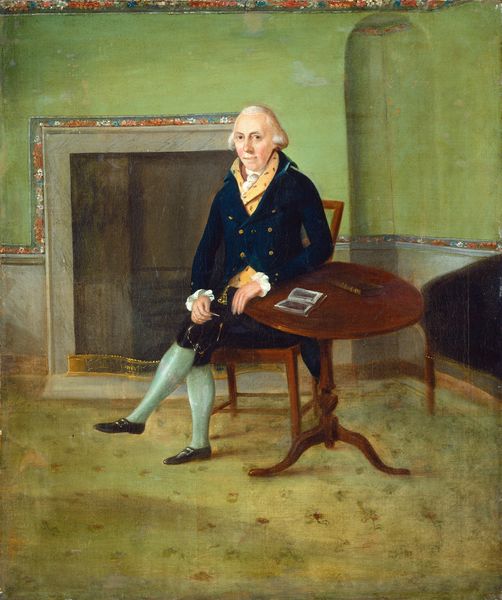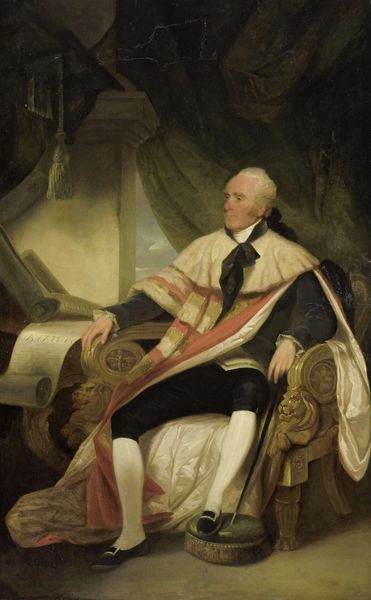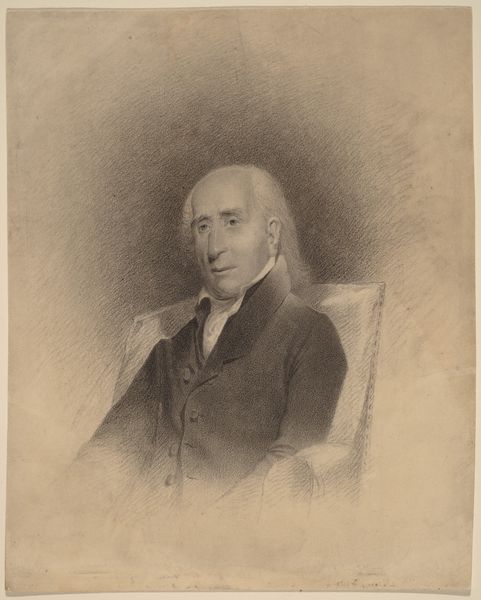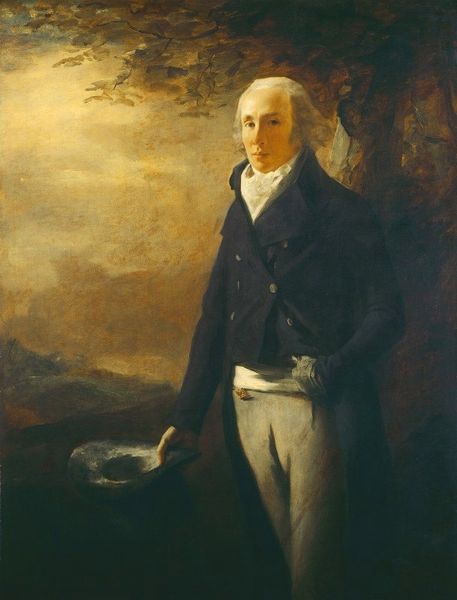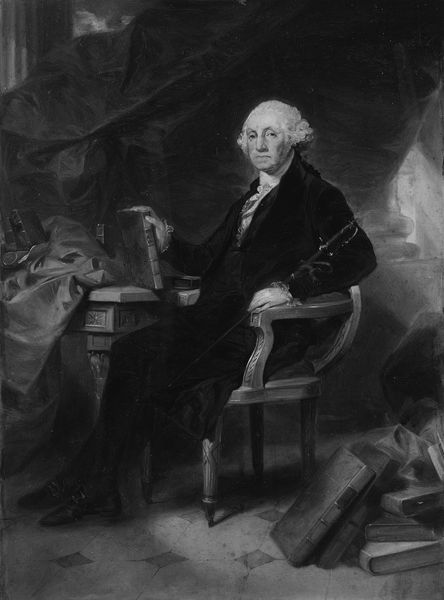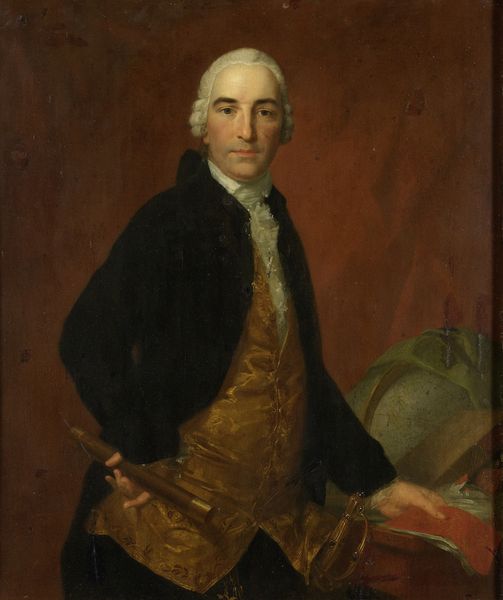
painting, oil-paint
#
portrait
#
figurative
#
painting
#
oil-paint
#
figuration
#
romanticism
#
academic-art
Copyright: Public Domain: Artvee
Editor: So this is Sir Henry Raeburn's "Adam Rolland of Gask II," painted sometime between 1800 and 1810. It's quite a stately portrait, oil on canvas. I'm struck by how posed it feels, almost like a scene from a play. What symbols do you see at play in this composition? Curator: Indeed. Think about the visual language Raeburn employs. Rolland isn’t merely sitting; he’s *placed*. The books signify knowledge, status, access to the realm of intellect. Notice the quill in his hand – a potent emblem of authorship and authority, literally shaping narrative, writing history, if you will. Editor: That makes sense. It’s like he's performing the role of an educated gentleman. The lighting seems to highlight his face, drawing attention there. Curator: Exactly! The light guides us, placing emphasis on the face as a map of character, revealing perhaps intellect, experience. Consider the cultural memory embedded here: portraits like this solidified a sitter's legacy, reinforcing notions of lineage and power. What does the positioning of his hand suggest to you? Editor: Perhaps thoughtfulness? That he is deep in contemplation about something. Curator: Precisely. It's a carefully constructed image of intellectual engagement. Think about what is *not* shown too: the spaces Raeburn obscures in shadow add to the mystique and psychological complexity of the man. This composition speaks volumes about the sitter, class, and the enduring power of visual representation. Editor: It's fascinating how much intention is behind every element in this portrait, constructing meaning beyond just a likeness. Curator: These weren't just pretty pictures. Raeburn carefully chose signifiers loaded with significance in their time and, perhaps, in ours too. Editor: I'll certainly look at portraits differently from now on. Thanks for illuminating that!
Comments
No comments
Be the first to comment and join the conversation on the ultimate creative platform.
